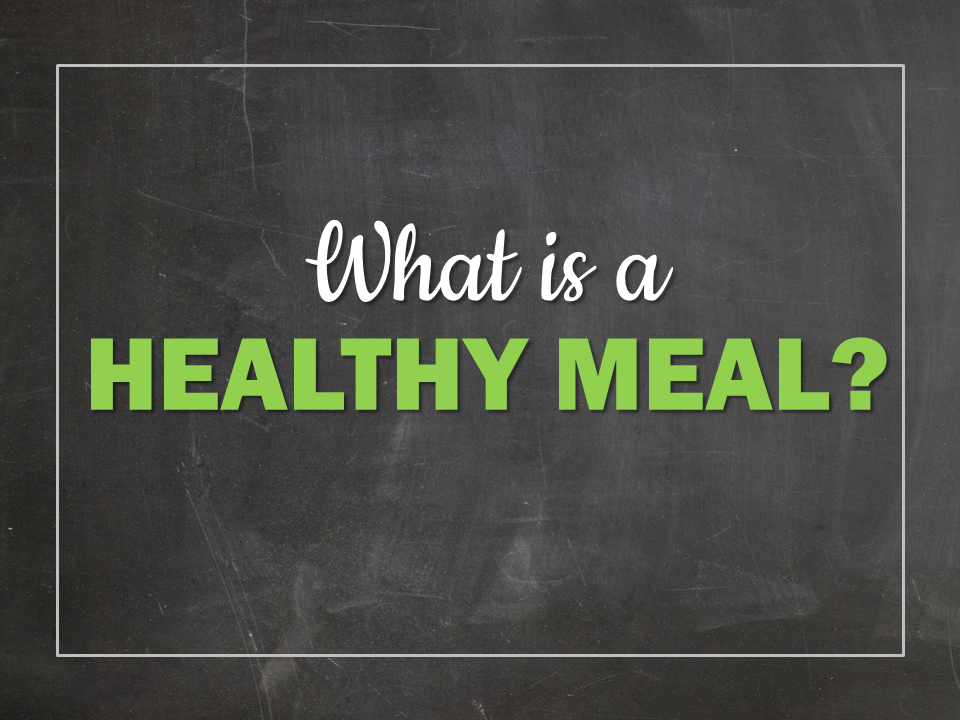“Eat healthy.”
We hear it, and maybe even say it, a lot.
But when it comes to meals, what exactly is HEALTHY?
HEALTHY can mean all kinds of things to all kinds of people.
And if you ask 100 people, you’ll get 100 different answers.
But, as I hear this question a lot, I’m giving you my favorite version of what I believe to be a HEALTHY meal.
And it’s not about WHAT or HOW MUCH to eat.
It’s about YOUR EXPERIENCE of eating and food:
A HEALTHY meal is one that ENERGIZES you and doesn’t deplete you, that you FEEL GREAT ABOUT, not guilty about, and that you ENJOY every single bite of.
It doesn’t have to do with calories, carbs, keto vs paleo, points, or macros.
It’s about allowing yourself to eat intuitively, feeling the effects of food on your body, and learning what works best for YOU.
Now, that being said, I know you’ll still want to know WHAT to eat.
And I’m giving you that, but with a caveat.
Although I’m outlining what I believe a HEALTHY meal should LOOK like, it’s not written in stone, and it’s not a prescription.
It’s what I know works well for me and for others, and it’s based on all the info I’ve gathered over the years.
So here’s my take on WHAT a HEALTHY meal consists of:
A HEALTHY meal is made up mostly from whole foods, with an emphasis on vegetables, as well as a good mix of protein, healthy fats, and, if desired, starches.
And I’ll also add that HOW you eat the meal is just as important for your health.
Eating slowly, eating when you’re hungry (e.g. know what hunger feels like in your body) and not eating too much (e.g. stop before you’re full) are part of what make up a HEALTHY meal.
Now, as promised, here is WHAT makes up a HEALTHY meal:
1. Vegetables
In my book, vegetables should be the biggest part of a meal.
I’m not saying that just because I’m a vegetarian (well, pescatarian now 😉)
But I’m saying it because veggies offer so much in the way of vitamins, minerals, and anti-oxidants.
They’re also nutrient-dense, and many are very low in glycemic load i.e. low sugar hit, low insulin release.
And although a mix of colorful veggies is preferred, dark green, leafy ones like spinach, kale, beet greens,broccoli, and bok choy are best.
I know that most of us aren’t in the habit of thinking of veggies first when it comes to making a meal.
But even if you don’t plan around veggies, they should take up the largest real-estate on your plate (about 40 to 50%.)
And ideally incorporate veggies into every meal, even breakfast (e.g. greens or pumpkin in a smoothie, veggie frittata or omelette, veggie and potato hash.)
How much should you eat?
An amount about the size of your fist* is great, or in the case of leafy greens, pile them on.
2. Good fats
Good fats are found in nuts of all kinds, seeds, cold pressed oils like olive and walnut oils, fatty fish like salmon and mackerel, and avocados.
Although I don’t do much dairy, yogurt and cheese could be considered here.
However, because dairy consists of animal fat, and many of us become intolerant to dairy as we age, it’s not my first choice
Good fats are nutrient dense, so you don’t need to eat them in large quantity.
How much should you eat?
For nuts and seeds, about a thumb-sized* portion is good, or 1 tablespoon of oil.
For fish, as with meats, you can go with a palm-sized* portion.
3. Protein
Traditionally this is the starting point of the meal: The meat.
Many of use are used to the meat being the main event.
But in terms of health and nutrition, it shouldn’t be.
Good sources of protein include lean meats, poultry, fish, seafood, eggs, tofu, and legumes.
How much should you eat?
For meats, poulty, fish, seafood, and tofu, a palm-sized* portion is recommended.
For eggs, a serving would be about two.
And for legumes, which are also considered a healthy starch, a cupped handful* is good.
4. Starch, or Smart Carbs
Carbs have gotten a bad rap, but not all carbs are created equal.
I agree that processed carbs like bread, pasta, crackers, chips, and cookies should be limited.
But carbs that come from a vegetable, fruit, legume, or unprocessed whole grain, are all good choices.
Now, a starch or smart carb, can be a vegetable like potato, sweet potato, or squash.
It can also be quinoa, cooked whole grains like millet or spelt or steel cut oats, and wild or brown rice.
Legumes and quinoa can also be considered both a starch as well as a protein.
How much should you eat?
A cupped handful* is a good serving size.
What else is there?
So, there are foods I haven’t mentioned
Mostly processed carbs, processed meats, and anything with added sugar, salt, or oils.
These kinds of food are mostly empty calories (meaning low in nutrients), and cause your blood sugar and insulin levels to rise significantly.
Then there are beverages.
Best choices are water and green tea, but other teas and coffee are good too, in limited quantities and without sugar.
And of course, there’s alcohol.
If healthy is what you’re going for, it’s not on the list.
But, as with everything, small amounts on occasion is fine.
So does what I’ve talked about here line up with your definition of a HEALTHY meal?
Let me know in the comments below.
And keep moving forward,
Debbie
P.S. Not sure how to eat for more for your health, and less emotionally? I can help. Book a free session with me and we can talk about it: www.momentum-fit.ca/book-a-session
* The portion sizes shown are approximated for a woman who is moderately active, assuming 3 to 4 servings a day from each group.


